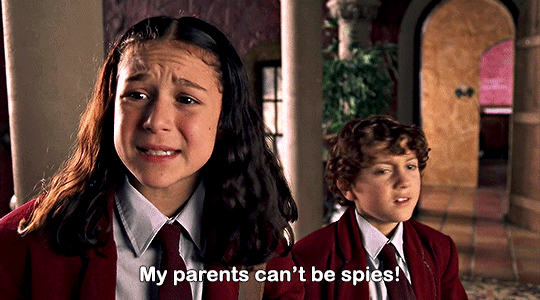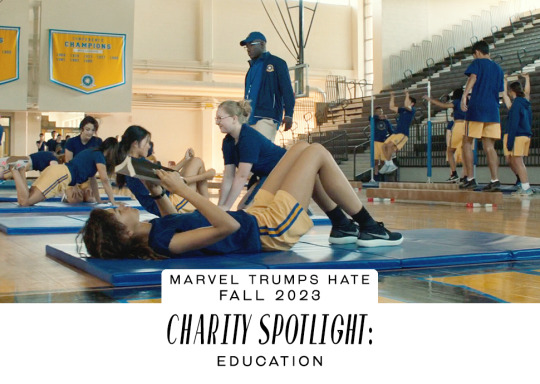#U.S. Latinx Films of 2022
Text
Cinema Tropical Announces the Best Latin American and U.S. Latinx Films of 2022

Cinema Tropical, the non-profit media arts organization that is leading presenter of Latin American cinema in the United States, is proud to announce its annual list of Best Latin American Films of the Year, comprised of 25 Latin American titles from twelve different countries, plus five U.S. Latinx productions—all of them by female directors—that the New York-based organization has selected as the best of the year.
Featuring productions from Argentina, Bolivia, Brazil, Chile, Colombia, Costa Rica, Guatemala, Mexico, Panama, Paraguay, Peru, the United States, and Venezuela, the films selected in this list will compete for the 13th Annual Cinema Tropical Awards.
The winners for Best Film, Best Director, Best First Film, and Best U.S. Latinx Film, will be announced in an in-person event on Thursday, January 12, 2023, at Film at Lincoln Center in New York City.
A jury composed of programmer Cecilia Barrionuevo, former Artistic Director of the Mar del Plata Film Festival; Andrea Picard, Senior Curator at the Toronto International Film Festival (TIFF); José Rodriguez, Programmer at the Tribeca Film Festival; and filmmaker Dominga Sotomayor (Too Late to Die Young); will choose the winners of the 13th Annual Cinema Tropical Awards in the Latin American cinema category.
Filmmaker Rodrigo Reyes (499, Sansón and Me); Ximena Amescua, Manager of Artist Programs at Firelight Media; and film programmer and producer Virginia Westover, will select the winner in the U.S. Latinx category.
Please note that all the films under consideration had a minimum of 60 minutes in length and premiered between May 1, 2021, and April 30, 2022.
Cinema Tropical’s List of Best Films of 2022:
(Listed alphabetically by title)
1. About Everything There Is to Know / De todas las cosas que se han de saber by Sofía Velázquez, Peru
2. Alis by Nicolas Van Hemelryck and Clare Weiskopf, Colombia/Chile/Romania
3. Amparo by Simón Mesa Soto, Colombia/Sweden/Qatar
4. The Box / La caja by Lorenzo Vigas, Venezuela/Mexico/USA
5. Clara Sola by Nathalie Álvarez Mesén, Costa Rica/Sweden/Belgium/Germany/France
6. Comala by Gian Cassini, Mexico
7. The Cow Who Sang a Song into the Future / La vaca que cantó una canción hacia el futuro by Francisca Alegría, Chile/France
8. Dos Estaciones by Juan Pablo González, Mexico
9. Dry Ground Burning / Mato Seco em Chamas by Joana Pimenta and Adirley Queirós, Brazil
10. Eami by Paz Encina, Paraguay/Germany/Argentina/Netherlands/ France/USA
11. El Gran Movimiento by Kiro Russo, Bolivia/France/Qatar/Switzerland
12. For Your Peace of Mind, Make Your Own Museum / Para su tranquilidad, haga su propio museo by Ana Endara Mislov and Pilar Moreno, Panama
13. Jesús López by Maximiliano Schonfeld, Argentina/France
14. A Little Love Package by Gastón Solnicki, Argentina/Austria
15. Mariner of the Mountains / Marinheiro das Montanhas by Karim Aïnouz, Brazil/France
16. Mars One / Marte Um by Gabriel Martins, Brazil
17. Me & the Beasts / Yo y las bestias by Nico Manzano, Venezuela
18. Medusa by Anita Rocha da Silveira, Brazil
19. The Middle Ages / La edad media by Alejo Moguillansky and Luciana Acuña, Argentina
20. My Brothers Dream Awake / Mis hermanos sueñan despiertos by Claudia Huaiquimilla, Chile
21. Prayers for the Stolen / Noche de fuego by Tatiana Huezo, Mexico/Germany/Brazil/Qatar
22. Robe of Gems / Manto de gemas by Natalia López Gallardo, Mexico/Argentina
23. The Silence of The Mole / El silencio del topo by Anaïs Taracena, Guatemala
24. Three Tidy Tigers Tied a Tie Tighter / Três Tigres Tristes by Gustavo Vinagre, Brazil
25. Utama by Alejandro Loayza Grisi, Bolivia/Uruguay/France
For more information visit:
www.cinematropical.com/awards13
# # #
#Film#Latin Films#U.S. Latinx Films of 2022#Best Latin American Films of 2022#Best Latin American Films#Cinema Tropical#Cecilia Barrionuevo#Andrea Picard#José Rodriguez#Dominga Sotomayor#Rodrigo Reyes#Ximena Amescua#Virginia Westover#naomi j richard#naomijrichard#Naomi Richard#RCV#Red Carpet View
5 notes
·
View notes
Text

Rafael Silva From 9-1-1: Lone Star Found His Way As a Queer Immigrant
ALEX GONZALEZ | SEPTEMBER 22, 2022
The Austin-set 9-1-1: Lone Star is actually filmed in Los Angeles, but actor Rafael Silva will make his way to Texas this month. Silva, who plays officer Carlos Reyes on the FOX procedural drama hit, is set to speak at the annual Black Tie Dinner fundraiser benefitting the LGBTQ+ community. This year, the ticketed event will take place at the Sheraton Dallas, and Silva is set to receive the organization's Vanguard Award.
We chatted with Silva via Zoom on one of his few days off from filming the upcoming fourth season of 9-1-1: Lone Star.
Though he will be in Dallas only briefly, Silva is looking forward to meeting LGBTQ+ people from all walks of life at the Black Tie Dinner, which will take place Saturday, Sept. 24.
“It’s such a privilege because you get to meet people who have gone through so many experiences,” he says. “I think learning from each other is the number-one task.”
Silva was born and raised in Brazil and moved to the U.S. at the age of 13. He recalls having his first inklings of queerness at the age of 4 as a child in Brazil, but by the time he arrived in the U.S., he and his family were mostly focused on adapting to a new culture, a process he describes as "chaotic."
It was through participating in the arts that Silva was able to understand what being queer meant. “I come from a country where machismo equates to strength, and equates to a feeling of superiority over others,” Silva says. “And being part of the LGBTQIA+ community is considered everything but that. Navigating how I was brought up, to moving here, to then receiving another identity as an immigrant and Latino was very confusing. But I found my way, thankfully.”
While his coming out experience was positive, Silva believes that media still has a long way to go in terms of telling LGBTQ+ stories, Latinx stories and how those stories intersect.
Off the top of his head, Silva notes that 25 years from now, it is predicted that the Latin population will exceed 100 million in the U.S. But, he points out, only 3% of television shows have Latinx leads, thus making for an inaccurate reflection of the number of Latin people in America.
“How does 30% of the consumers make up only 3% of film and television?” Silva says. “I think culturally and socially, Latinx and queer people are forgotten. It's as if you plant a tree and you expect it to grow, and it creates the very first fruits, and then you take all of the fruits, but then you keep expecting more, but you don't keep watering or nurturing the tree. How does that even work?”
In the years he’s been playing Carlos, he is proud to be a source of representation for queer Latinx people. He says he receives messages from fans in real life and on social media about what Carlos has meant to them, and having that kind of impact, he says, is truly rewarding.
Silva describes his character as someone who “tries to do the best he can,” but teases that he’s going to “trip pretty hard” at the beginning of the fourth season, which premieres in January 2023.
The third season of 9-1-1: Lone Star ended with Carlos getting engaged to his longtime boyfriend, TK Strand (Ronen Rubenstein). Fans of the show have nicknamed the couple “Tarlos” and often use the hashtag #Tarlos on Instagram and Twitter to share theories and fan fiction.
Silva admits he does read the posts from time to time, although he doesn’t want to get too invested. He says he prefers to maintain “a healthy relationship with social media.”
“I think the healthiest way to maintain it is to maybe read one or two posts,” Silva says, “but not diving too deeply into it.”
Silva can’t share too much about the upcoming season of 9-1-1: Lone Star, but he teases a “big surprise for Carlos” in the season premiere.
“It might piss off some people, it might not,” Silva says. “But I think it determines the tone as to how Carlos approaches the rest of the season.”
Over the years, the Black Tie Foundation has raised over $27 million for LGBTQ+ causes. Silva is honored to attend their annual dinner, and he regards the event as an example of the change he wishes to see in the world. His hope for the future is that he and everyone else continue to put good into the universe.
“It’s not just about queer rights. It’s not just about climate change,” Silva says. “It’s about all of us. For me, I'm on that wagon personally of just trying to get everybody to stop the bullshit. And just if we need to hold hands and sing ‘Kumbaya,’ then so be it, if that's what gets the job done, for all of us to stop this nonsensical behavior pattern of just trying to be better than each other. The solution to stagnation is diversity.”
#rafael silva#911 lone star#carlos reyes#press#interviews#dallas observer#events#black tie dinner dallas#ls season 4#ls 4 pr#awards and recognition#ls 4x01 pr#september 2022#tarlos
199 notes
·
View notes
Text
Spy Kids
Ingrid and Gregorio Cortez retired from their careers as spies (rivals, at that), to marry and start a family. They shield their children, Carmen and Juni, from their dangerous past lifestyle. However, everything changed when four top agents went missing. Ingrid and Gregorio are called back to their past profession by the Office of Strategic Services (OSS). It turns out that TV show star, Fegan Floop, is the evil master behind it all; he mutated the agents into robots that look like kids (hence, spy kids). And, if all goes according to plan, these spy kids will take over the world. The family must come together on a thrilling secret spy adventure to take down Floop’s masterplan.

This film was a major jump for director Robert Rodriguez, creating this film into a huge Hollywood hit with Latinx representation. Rodriguez made it clear that this was a Latinx family right from the beginning of the movie. One thing I noticed right away was the amount of Latin music in the soundtrack. Listen to an example from the movie’s soundtrack on youtube:
youtube
Other than that, their last name is Cortez, the style of the wedding from one of the very first scenes (for example, the calaveras bride and groom cake toppers), calling relatives “uncle”, and adobe style houses.
However, one thing is lacking in this film... and that is actual Latinx representation. Very few characters are actually of Latinx descent. Despite this, Rodgriguez made what was one invisible in the eyes of Hollywood seen, celebrated, and admired.
I believe this film must be particularly enthralling for Latinx children seeing a Latinx family with kids doing cool spy things and parents themselves being spies. In Takaki, Chaper 12, “El Norte: Up from Mexico” (pp. 292-310), we learned that times during and after the Great Depression were extremely hard for Mexican families to get an education and get jobs in much of anything besides low wage jobs and construction. Immigrant discrimination also began to rise, effecting abilities to receive jobs in the U.S. This all being said, it is extremely important for children to see people like them succeeding with a really awesome job. Although it is not realistic having a family of spies, it is still important for Latinx children to be exposed to seeing a smart and exciting family that looks like them. I mean, come on! Who wouldn’t want to be as cool as THIS...

Works Referenced:
Motamayor, R. (2021, October 22). 20 years later, and spy kids is still a benchmark for Latinx representation in blockbusters. SYFY Official Site. Retrieved May 18, 2022, from https://www.syfy.com/syfy-wire/spy-kids-anniversary-latinx-representation
Spy kids. Spy Kids Wiki. (n.d.). Retrieved May 18, 2022, from https://spykids.fandom.com/wiki/Spy_Kids
9 notes
·
View notes
Text

Education
We'd venture to guess that one of the common threads that unites our fandom is a belief in the power of education and all that comes with it. Taking down barriers to literacy, higher education, and other forms of knowledge-building, these organizations are working to ensure everyone has access to the transformative power of ideas and resources for personal and professional development.
For more information on donation methods and accepted currencies, please refer to our list of organizations page.
ALA "Unite Against Book Bans" Campaign
This campaign run by the American Library Association is the best way to fight against the book bans happening in several U.S. states. This fight is more crucial than ever; in 2022, the ALA recorded the highest number of censorship attempts in the past 20 years. The initiative works to halt the spread of censorship in school and public libraries across the U.S., empower individuals to fight censorship in their communities, and preserve our right to choose what to read.
Girls Who Code
There is a massive gender gap in technology, and Girls Who Code is actively seeking to end that—and they're on track to close the gap in new entry-level tech jobs by 2030! Girls Who Code also focuses on historically underrepresented groups, not just gender diversity; half of the girls they serve are from those groups, including those who are Black, Latinx, or from low-income backgrounds. Through clubs, college programs, and summer immersions, GWC reaches girls of all ages (elementary school through college) and all knowledge levels (beginner to advanced) to teach them coding, expose them to tech jobs, and provide a community with other women in tech. We imagine this would be close to the hearts of several of our favorite characters, so choose this one if it's close to yours as well.
Room to Read
Room to Read focuses on literacy and education for children, particularly girls, in historically low-income communities around the world. They collaborate with local governments and educational providers to ensure that their solutions are sustainable as they work to decrease the rate of illiteracy and increase gender equality in education worldwide.
Southern Poverty Law Center
If there is injustice against a vulnerable and/or marginalized group in the U.S., SPLC aims to address and fix it through a myriad of ways including their education program, Learning for Justice. Learning for Justice offers free resources, such as magazines, podcasts, films, training sessions, webinars, etc. to more than 500,000 caregivers, teachers, administrators, counselors, and other practitioners who work with children from kindergarten to high school. Their justice-focused approach helps students and educators learn how to become involved in activism, tackle prejudice, and create more civil and inclusive communities.
0 notes